Finnish Armour Colours and Markings (Mid War)
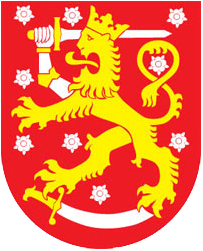 | Finnish Armour Mid War Finnish Armour... |
| Regulations specified size, colour and location of the markings. Armoured vehicles were to display three 32cm high black and white Hakaristi, one on each side and one on the rear of the turret. Local variations and field application however led to a variety of sizes, locations and colours being seen (blue or black). Despite the regulations the colour and size of the Hakaristi was ultimately decided by the crew. Blue was a common sight during the mid war, but gradually disappeared from use by 1944. | 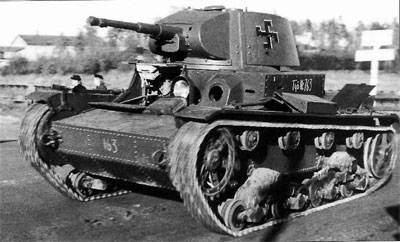 |
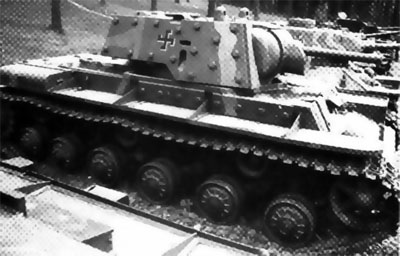 | By the middle of the continuation war period the size, colour and location of the national markings had pretty much standardised, with an additional two markings added to most vehicles, one on the front glacis plate and one on the turret top or turret hatch. One notable exception to the regulations was the temporary armoured detachment formed by 1st Division using captured Russian equipment and commanded by Lt L Torni. His vehicles carried the blue and white Hakaristi and they also featured longer hooks on the arms of the insignia. |
| Evidence also exists of some of the tanks from the heavy companies having a small flag staff fitted to the turret roof on which a small Finnish flag pennant would be displayed. Right: Long hook Hakaristi as used by Torni’s unit. | 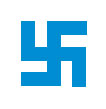 |
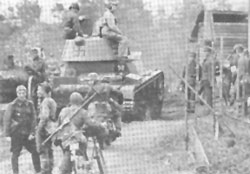 | Division During the later period of the continuation war the Finn’s adopted the three headed arrow, the Arrow of Largus, as the badge of its armoured division. This was however limited to use as a cap badge and sleeve insignia of armoured division personal and no evidence of it having been applied to armoured vehicles can be found. |
Battalion and Company Right: A company marking can be seen next to the Hakaristi on the hull front. This T-26 is being passed by a much faster bicycle! | 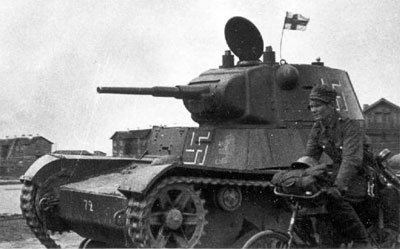 |
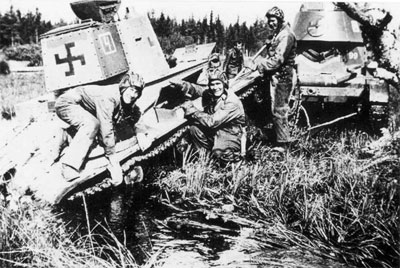 | 1st Company – Bears Head Left: A T-26 with the later company markings. |
Upon the creation of the brigade the company marking system was changed. The 1st battalion companies where designated by the use of a geometrical shape in white. Individual vehicle numbers where then displayed inside the geometric shape to indicate tanks position within the company. For example 1st platoons vehicles would be numbered 1-5, second platoons 6-10 and third platoons 11-15. The company commander’s vehicle would display a zero with the geometric symbol. 1st Company – Square | 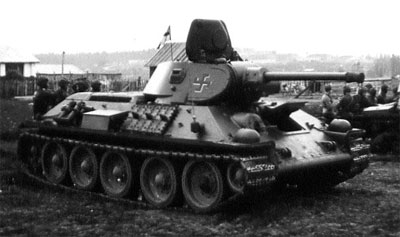 |
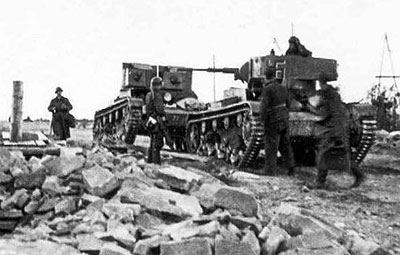 | Note the third company was designated the heavy company and equipped differently from the other two as described above. Whilst it had fewer tanks it still used the same numbering system with the unfilled position numbers within the platoons not being used. Company Commanders vehicles would have been marked as 1/4, 1/5 and 1/6 respectively, whilst within platoons markings would have been: |
1st platoon – 1/I to 5/I In mid 1943 the Finnish armoured division adopted the German three number system. Photographic evidence would indicate that whilst this tactical numbering system was used it did not become widespread, particularly during the midwar period. | 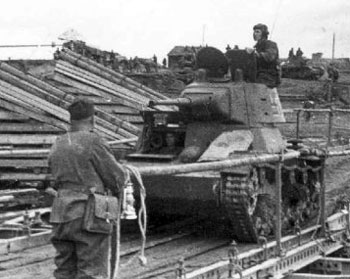 |
| The only company colours I have been able to find information on are: 1st Company – White 2nd Company – Yellow 5th Company - Red |
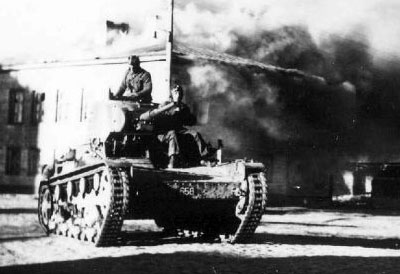 | Registration Number By the midwar period the Finn’s had adopted a new vehicle registration system. Registration numbers would consist of the designator Ps. followed by a one to three number indicating the vehicle model type and a further one to three digit number indicating the individual vehicle number. This normally appeared in white lettering on the front and rear of vehicles. The following three digit numbers where used to indicate vehicle models: |
T26 variants 161 – 164 For example a full registration for a T-26 may appear as Ps. 163-28. Right: Sample registration of a T-26. | 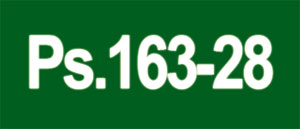 |
| Unofficial Markings The Finns did not make much use of unofficial markings on tanks during the midwar period. Occasionally a tank would bear a painted nickname or woman’s name on the turret or near the driver vision slot but these where normally quite small and unobtrusive. One notable exception was the T-26 of the 1st Battalion’s commander which proudly bore the nickname VIKU on the left hull side. Later the Sturmi assault guns carried official nicknames and in the later period of the war the use of kill rings on barrels was seen. |
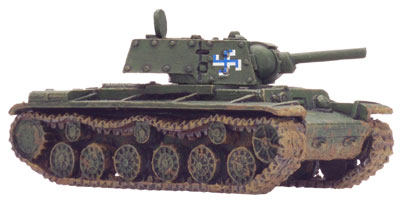 | Colour and Camouflage Until mid 1943 all Finnish armoured vehicles where painted in a single very dark green scheme. Whilst the colour is often referred to as Field Grey it differs quite considerably from the German colour of the same name. Many captured Soviet vehicles often remained in their Soviet schemes for some time before repainting. During winter a white wash was often applied to tanks, either completely or in stripes or patterns over the base colour. |
A disruptive pattern of winter white wash with blue grey striping was also employed on some vehicles and guns; however evidence of this scheme having been used on tanks is inconclusive. Whilst photos can be found of restored vehicles in this scheme, evidence of actual wartime usage is lacking so they may have been incorrectly applied during restoration. Following removal of winter white wash in 1943 the armoured division commenced repainting its armoured vehicles in the Finnish three colour scheme that had been used since late 1941 on artillery pieces and soft skin vehicles. | 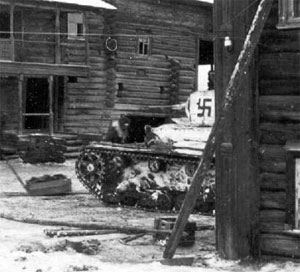 |
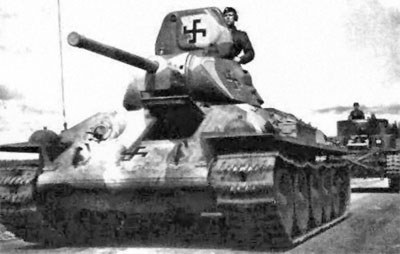 | The Green and Brown both where of a similar shade and hue and as such the differentiation between the two is often very hard to discern in old black and white photographs. Left: A T-34 in the three colour scheme, in this black and white photo only the grey is clearly visible. The six Landsverk Anti II armoured anti-aircraft vehicles obtained from Sweden were maintained in their original Swedish three colour system. A well known photos of a restored Landsverk Anti II at the Finnish Tank museum shows it incorrectly restored in the Finnish scheme, a research error that has been acknowledged and will not doubt be rectified in the future. |
| Right: Dion’s BT-42 painted in the Finnish three colour scheme. The Swedish scheme was applied in a similar irregular pattern to the Finish scheme but in Grey-Green, Brown and Yellow-Brown. | 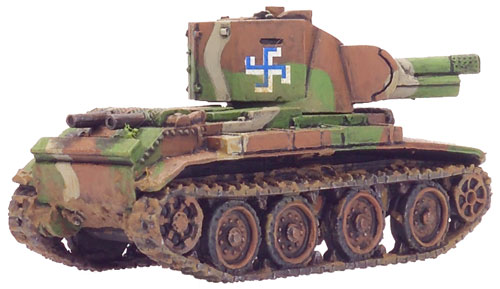 |
Suggested Vallejo colours
|

Ingen kommentarer:
Legg inn en kommentar